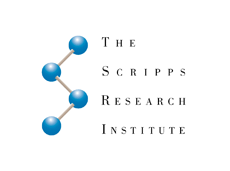Scripps Research Institute
07/1998 -
10/2003
(CAN 1)
Scripps Research Institute
What constitutes life, requirements for the origins of life and evolution, and how living systems may be identified elsewhere in the universe are some of the most fundamental questions in astrobiology. Under the auspices of the Scripps Research Institute, a “vitual institute” has been assembled to explore multidisciplinary experimental approaches to self-replicating molecular species and Darwinian chemistry, the most important hallmarks of life. By comparing and contrasting the results of diverse but complementary sets of experiments, the Scripps Team works for a better understanding of life and its origins.
Benner’s Group at the University of Florida, Gainsville
- Model of Non-Terrean Genetic Systems Study how such genetic systems might be structured and detected on Mars, Europa, and elsewhere (e.g., research finding that hydrogen bonding is central to base pairing in DNA)
- Generate Artificial Experimental Models for Life in the Laboratory Develop polymerases to support in vitro selection with functionalized nucleic acids on an expanded genetic alphabet
- Coupling Geology to Genomics Organize a database of protein sequences containing a complete history of macromolecular life on Earth, in order to extract genomic clues that couple events in the molecular record with mass extinctions, paleoecology biosphere transitions, and planetary events
- Organic Chemicals on the Surface of Mars Study Martian meteorites to develop simple assays to detect organic chemicals and influence design of Mars probes
Ghadiri’s Group at the Scripps Research Institute
- Novel Self-Organized Molecular Systems Design and characterize novel self-organized molecular systems that display emergent properties such as replication and parasitism
- Homochirality in Living Systems
- Research on the origin of homochirality in living systems, pursuing evidence to examine the viewpoint that chiroselective replication of biopolymers seems an attractive process for explaining homochirality in nature, given that molecular self-replication and capacity for selection are necessary conditions for emergence of life
- Studying the idea that self-replicating peptides could have played a key role in the origin of homochirality on Earth, this group’s research involves a 32-residue peptide replicator that is capable of efficiently amplifying homochiral products from a racemic mixture of peptide fragments through a chiroselective autocatalytic cycle.
Ellington’s Group at the University of Texas, Austin
- Evolution of Self-Replication Species Research on various intermediates in a hypothetical ascent of molecules from simplistic origins to complex catalysts that may have been present in a putative RNA world, with these studies:
- in vitro selection of a simple deoxyribozyme that may have resembled some of the earliest self-replicators
- evolving a ribonucleoprotein enzyme that may have resembled catalysts found at the boundary between the ancient RNA and modern protein worlds
- Organisms That May Be on Other Planets Study of an E. coli strain that completely incorporates an unnatural amino acid throughout its proteome, demonstrating that canonical, terrestrial chemistries are adaptable and serving as an avatar for organisms that may be found on other planets
Rebek’s Group at the Scripps Research Institute
- Evaluate Molecular Requirements for the Self-Replication Process in Abiotic Systems
- Study a system of autocatalysis (with encapsulated reagents that work on molecular recognition principles, but with no direct contact between reagents and products), in order to view autocatalytic behavior as an emergent property of the system as a whole, not a property of specific molecules within the system
- Determine if emergent properties of this system relate to those of self-replicating molecules
Switzer’s Group at the University of California, Riverside
- Alternative Nucleic Acid Structures
- Work to synthesize alternative nucleic acids (ANAs), by taking small steps in “structure- space” away from RNA, the best model for a molecule bearing features both universal and unique to life
- Synthesis of ANAs to attempt the optimization of polymer structure subject to constraints of prebiotic availability, template-directed reproduction, replication conservative mutation, and fitness
- Examine ANAs with novel changes to base-pairing domains, backbone charges, and the sugar subset, all to define chemical parameters for molecular evolution
- Study whether nucleic acid-like molecules are sufficient to enable the origin of life and what limitations exist for life elsewhere in the universe based on a single biopolymer (e.g., RNA) rather than multiple biopolymers (DNA, RNA, proteins, carbohydrates)

-

M. Reza Ghadiri

-
Active Dates:
07/1998 - 10/2003 -
Team Website:
Coming Soon -
Members:
33 (See All)


